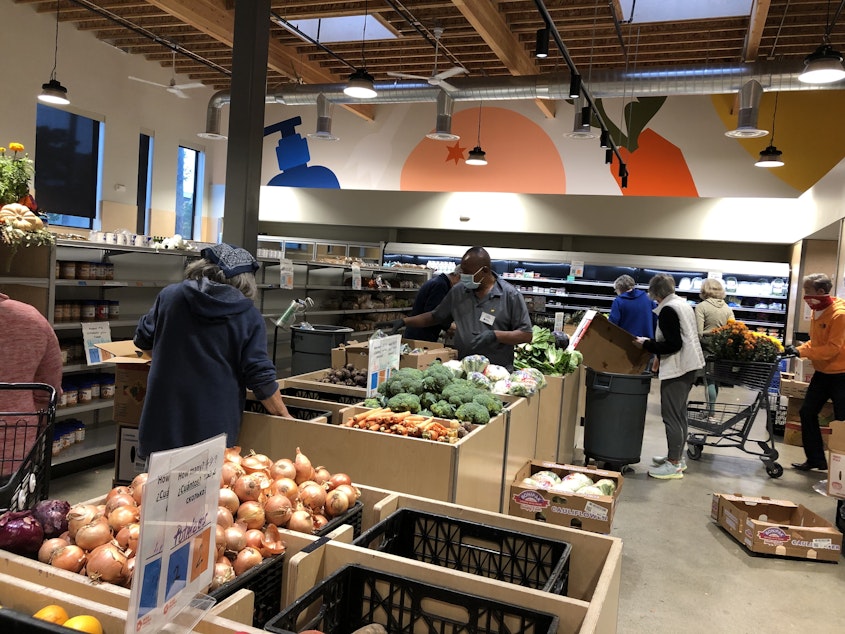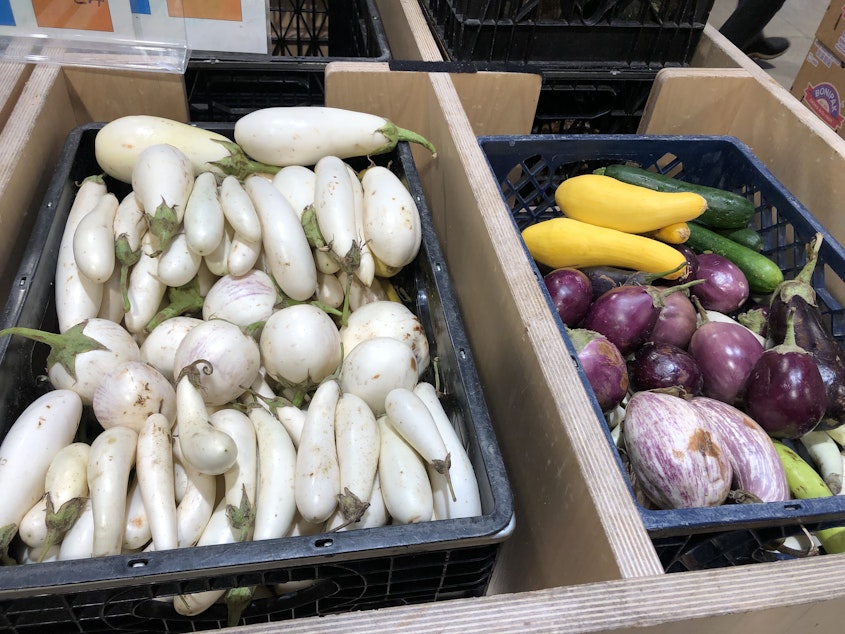Food banks are growing – and transforming – to meet a rising need

Historically, many food banks started small, usually in church basements or as an extension of a religious organization. But starting with the pandemic, demand has been rising, with no signs of letting up any time soon. And increasingly, food banks are providing more than nourishment.
When Rainier Valley food bank first opened in 1991, it was an all-volunteer group that served about 50 families each week. Last year, more than 730 people came through their doors each week.
Executive Director Gloria Hatcher-Mays says things haven’t slowed down. While many people are moving toward a post-pandemic recovery, she says many more continue to struggle with inflation spikes.
“Even though they’ve gone back to work, many are still coming here to make ends meet,” she said.
The food bank just moved to a larger space. Plans are underway to transform it so looks more like a grocery store than a food pantry.
“We have discovered that if you’re going to treat people with dignity you have to have a space that will allow them to shop for themselves,” Hatcher-Mays says.
Sponsored
That includes offering fresh produce and culturally relevant food like collard or mustard greens and halal meat. The idea is to create a welcoming space and to reduce the stigma of having to rely on charity.
Hatcher-Mays sees the new space as more than just a food hub.
“It’s going to be a hub for services and connection to community in general,” she says, “a place to convene, feel connected, not lonely.”
Many food banks have adopted an approach that gives people choice beyond commodity or non-perishable foods. It helps reduce food waste.
Scott Allard researches poverty and safety net programs at the University of Washington. He recalls a time when he volunteered at a food pantry in suburban Chicago where they used to give people jars of peanut butter.
Sponsored
“We would find jars of peanut butter in our dumpster because they were getting jars of peanut butter from everybody,” Allard says.
He says it prompted the organization to switch to a different model, and people appreciated having more choices about their food.
“It matters even though it may not in and on itself be enough to lift that family out of poverty,” Allard says. “It matters to that daily experience and it matters to the trust that people build with those providers.”
Fostering trust is critical to helping people connect to services they might need. One example can be found in Ballard.

Sponsored
Ballard Food Bank outgrew its old location and moved more than a year ago. When you walk in, there’s a café where people can sit and grab coffee or a bite to eat. Today’s soups are potato bacon or French onion.
The store looks like a food co-op. Volunteers are stocking bins with fresh produce. There are also shelves for shampoos, soap, hygiene products, and pet food.
Executive Director Jen Muzia explains that once people are done picking out what they need, they bring the items to a checkout counter where volunteers check in with them.
“So it’s an opportunity to connect, they’re helping them bag their groceries. How are they doing?" Muzia says. "Do they know that we have some other services going on here, too."
Those services take place on the other side of the store, whether it’s low-cost pet care, rent utility assistance, or health-care needs. But like every household, food banks are struggling with rising costs, too.
Sponsored
“We used to spend about $300,000 a year on food,” Muzia says. “And this year we’re going to be looking at spending $1.5 million.”
Compounding the challenge is the fact that they're receiving fewer food donations from grocery stores.
Ryan Scott is chief development officer with Food Lifeline, an organization that supplies food banks with donations.
“In a normal year, we have somewhere between 4-5 million pounds of food in our warehouse, moving out for distribution," Scott says. "Right now, we just have a little over a million.”
Scott says donations are low in part because grocery stores are experiencing supply chain issues. In addition, federal Covid assistance that helped food banks has expired. Food Lifeline says it spent $10 million this year alone in food supplies, more than double the amount in a typical year.
Sponsored
This reflects a new reality: food banks have been a source for what people need in the moment, but these days they’re connecting to what they need next. Food banks are no longer just for emergencies; they have become a permanent part of the safety net.




